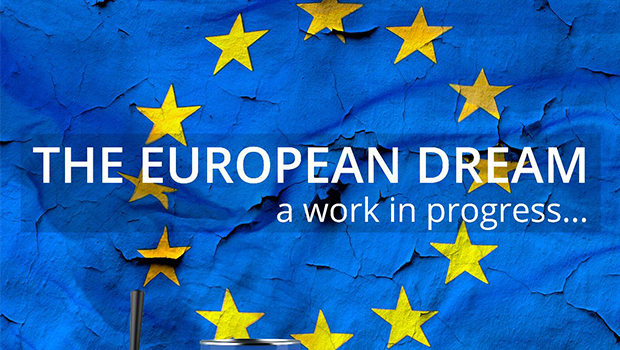« Europe is a realistic utopia ». These seemingly contradicting words by Peruvian writer Mario Vargas Llosa are a poignant reminder of the way Europe has first been imagined and then built itself during the decades. Indeed, the construction of the European Union, notwithstanding its bureaucracy and political manoeuvring, has all through its development been based on a very precise idea of what constitutes Europe. In other words, the EU was originally based, if we can borrow the term, on a “European Dream”. And all efforts, with all the limits of the case, were taken to make this dream real.
Today, this dream is no more to be seen. We might even say that the great financial crisis has hijacked the European dream: by focusing exclusively on economic woes, European governments, citizens and institutions alike have lost the ability to think about their identity. Europeans, in other words, have stopped dreaming. The lack of a positive narrative, of an idea of future, has been manifest at the recent European elections that took place at the end of May: while the mainstream parties quarrelled on austerity, the only ones with a vision of Europe – albeit a negative one – were the Eurosceptics. Also for this reason they might have been able to gain an impressive number of seats at the European Parliament.
But can we leave the right of initiative to the Eurosceptics? Is the European dream dead? The New European is convinced that it is not. What is urgently required now, though, is a serious reflection on the real scope of this dream, to determine how much its values are still valid. Now that the economic crisis is approaching its end, a new vision of Europe becomes necessary: the European Union cannot limit itself to survival. It has to create an idea of progress and equality, to regain its citizens’ trust. In other words, it must rediscover its European dream. A general vision of itself and its place in the world, informing its actions in the years to come. The result of the elections clearly shows that citizens want real changes. In this respect, the EU faces a clear alternative: driving the change or losing itself.
The second issue of The New European, that you can read online for free here, is meant to be UNITEE’s contribution to the debate. In its articles, that will also be posted in this section of the blog on a regular, weekly basis, a wide array of policy makers, intellectuals and Europhiles try to define what constitutes the European Dream and how it can be updated. With one belief: the solutions proposed are not utopias, or far-flung projects; they already exist, somewhere in Europe, and are successful. They just have to be consciously implemented by willing actors.
In outlining this vision, The New European stays loyal to UNITEE’s core beliefs: the first one, that innovation is key for Europe to regain its status on the global scene. And the second one, that true progress is only possible if diversity is fostered and respected. The European Dream has historically been one of diversity and harmony, equality and creativity, sustainability and progress. Of establishing a balance between the opposites of reality. In our perilous times, where such a balance has been lost, we have the opportunity to revive this dream, and make Europe, again, a “realistic utopia”. Are we up to the task?
This article is the Editorial of issue 2 of The New European, UNITEE’s new magazine, dedicated to analysing the European Dream and the ways to revive it. In the following months, we will publish a selection of some articles from the magazine and give you the possibility to comment on them. The complete online version of The New European can be read for free on UNITEE’s website. Now it is your turn: let us know what you think about it!
Leave a Reply